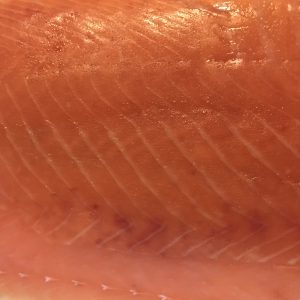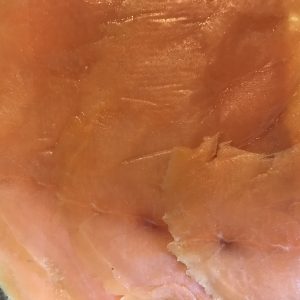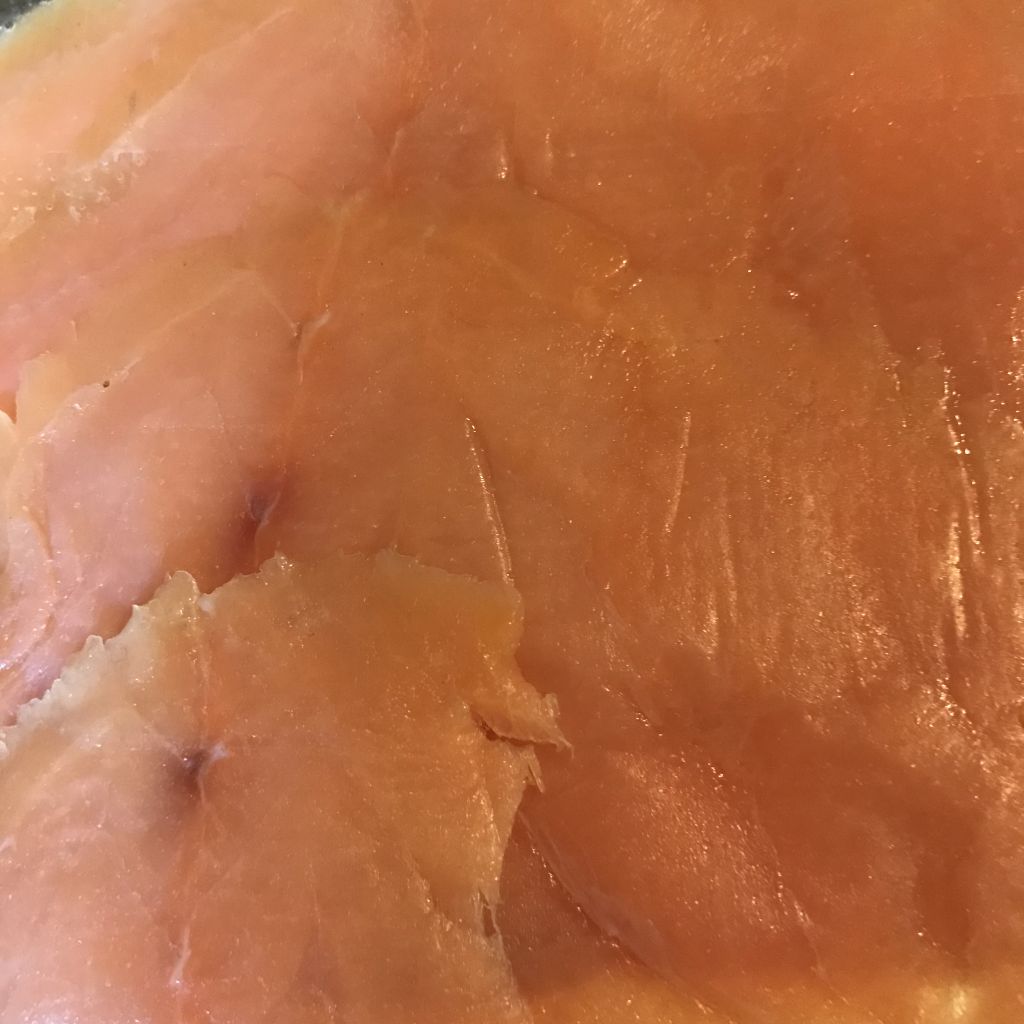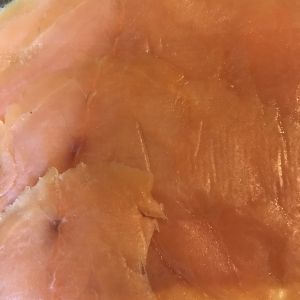Count(er) on it: Last weekend, the Mail on Sunday revealed that leading UK supermarket chain Tesco were considering closing the meat, fish and delicatessen counters in most of their 732 larger stores. This would involve the loss of up to 15,000 jobs. This leaked news story forced Tesco to make an announcement and they confirmed that 9,000 jobs could go and that fresh food counters would be cut from at least 90 stores. Others might only open on two or three days a week. The reason was assumed to be the increasing competition from the discount stores, which meant that the big supermarkets had to cut costs to remain profitable.
This news came as no surprise to us, at Callander McDowell. We have been expecting to see the fish counters being increasingly phased out from many stores and not just those in Tesco. The reality is that most supermarket fish counters are now an expensive luxury that the retailers can no longer afford. It now seems that this is also true of the meat and delicatessen counters. The typical deli counter customer often only uses the counter because they can buy one or two slices of a cooked meat. Those customers who buy larger amounts usually tend to buy the prepacked offering, In the case of the meat counter, we rarely see any customers at all.
However, in the case of the fish counter, the writing has been on the wall for some time now. We are reminded that many years ago we used to regularly visit one out of town Tesco store. There were plans to rebuild and upgrade the store and to find out what customers wanted to see in the new store, they placed a book in the foyer in which customers could list any preferences. The top answer was a fish counter and a fish counter was subsequently installed. Over the following months, the counter offering diminished to the point that the range was reduced to one of the smallest that we might see in any Tesco store. The problem for Tesco was that they asked customers what they would like to see. They didn’t ask if these customers wanted to actually buy the fish because clearly, they didn’t.
We have argued for some years that home consumption of fish is massively in decline. This is reflected in the fact that shoppers now don’t visit the fish counter, except possibly on a Friday. We, at Callander McDowell tend to keep a low profile during our store visits so don’t tend to interact with staff but we did accidently fall into discussion with one lady fishmonger. After that, she looked forward to a weekly chat. What became apparent was she was bored solid. Her typical daily shift involved serving a grand total of about four customers. Eventually, she was so fed up with standing about doing very little every day that she quit.
This is not just a Tesco problem. Sainsbury’s appear to have a reduced offering on the counter during the week and only fill it up on Friday’s. Some Asda counters appear to have no permanent staff and anyone wanting serving has to shout out for an assistant. The fish range in Morrisons is less than it used to be. At the moment, Waitrose seem to be doing OK although some fish counters are smaller than they used to be. Waitrose customers are a different profile to those of other stores and are currently more likely to buy fish from the counter.
We have heard it said that Tesco’s decision is odd because the fish counter is a point of differentiation from the discounters, but there is no point being different if no-one uses the counter. The move by many shoppers to use the discounters is one change in the retailing sector to which others have to adapt. In the case of fish counters, our view is that the retailers have failed to adapt the counter to the changing shopping behaviour. Together with the decline in consumption, fish counters now look rather dated in terms of modern retailing. The fish sector as a whole has also largely failed to recognise the future direction of the retail sector and to adapt accordingly.
One option for the fish counter is that they could be franchised to external fishmongers. Certainly, Asda have tried this with the meat counter. We are not sure how successful this is, but the franchise in our local Asda has now gone. We doubt whether a franchise would work where the instore counter has failed. There is one example where Keenan Seafood run a counter in Tesco in Newtownbreda in Northern Ireland. It is still operating but whether this can be rolled out to other stores seems unlikely.
One commentator, writing in the Daily Mail has said that supermarket fish counter closures offer a high opportunity to the independent fishmonger to reclaim this business. However, the decline in fish consumption is so entrenched that it would take a major national campaign to reverse.
As we regularly say, if you don’t want to buy fish, why visit the fish counter. The same is true for the independent traditional fishmonger.
Instagram trout: The Times reports that the days of serving smoked salmon at dinner parties may be numbered. This is because there is a growing demand for smoked trout, consumption of which has increased by a third in Scotland. This is being driven by social media obsessed consumers who say that they prefer its more intense colour in food photography. Smokers say that it is no longer enough that the smoked fish should taste good, it must also be able to be beautifully presented. The Luss Smokehouse say that people are becoming more interested in alternative foods and smoked trout is delicate and slightly sweet n flavour with a deep orange colouring that is pleasing to the eye.
Sales of smoked trout are up 29% whilst smoked salmon sales grew by 2.6% over the same period. In addition, 27% more households are buying smoked trout.
The Times continue to say that experts highlight the health benefits of smoked trout over some types of salmon as the reason behind the boom in popularity. They say that sea trout exposed to strong currents are leaner than farmed salmon meaning a less fatty end product and fewer calories. We, at Callander McDowell, are not sure who these experts are, but the newspaper spoke to Barry Bryson Jack, an Edinburgh-based private chef who said that his most clued up clients are now requesting smoked trout and he uses it in smoked trout ravioli and trout cerviche served with fennel ice cream. He said that presentation-wise it scores highly owning to the phenomenal natural colour of wild sea trout.
The rise of sea grown rainbow trout has confused the market. Some restaurants simply describe the fish as sea trout which is misleading because they are not the same fish. However, there is so little wild sea trout available now that there is little chance for confusion. However, it is not clear when Mr Jack refers to wild sea trout, he really means wild or is he too being misled. It is difficult to know with private chefs. His clients may be sufficiently affluent for him to track down wild fish. The Luss Smokehouse, however, make it clear that their smoked trout is farmed.
It is a long time since we saw any smoked wild sea trout and we wondered whether it might be something that could be bought. We did eventually mange to locate smoked wild sea trout. This is being listed by the Port of Lancaster Smokehouse using fish caught from the River Lune. We previously mentioned that we had eaten some wild River Lune salmon at a restaurant on the banks of the river. The Smokehouse also manages to source a small amount of salmon for smoking and when we looked, it still had both wild smoked salmon and wild smoked sea trout available, so we bought some. This seems a good opportunity for a taste test of wild and farmed of both salmon and trout (although the trout are not the same species).
Recently, we had been given some smoked wild caught salmon, which was pleasant enough but not mind-blowingly better than the farmed smoked salmon against which it was tasted. We found that the River Lune smoked salmon was rather bland. The difficulty is to know whether this is the fish or the way it has been smoked. By comparison, the smoked farmed salmon from Forman’s London smokehouse had some flavour. It had a different texture probably because it was a slightly thicker cut.
The smoked wild sea trout was a disappointment. Firstly, because it wasn’t the bright colour that Mr Jack had suggested but more importantly, because it just wasn’t nice to eat. The farmed trout from John Ross had a stronger taste of smoke due to the stronger Scottish smoke but it was a huge improvement on the taste of the wild fish.
We’ve included an image of the four smoked fish and invite readers to see if they can identify which is which. We will provide an answer next time.
a b
b 
c  d
d 
Spat for sport: Kyst.no have reported of a developing spat between Norske Lakseelver, representing Norwegian salmon anglers and commercial salmon fishermen. The anglers say that their catch has fallen by 25% whilst salmon fishermen have seen their catch increase by 11%. Norske Lakseelver say that this exploitation cannot continue. They think it is wrong that 900 commercial fishermen can remove more fish than 100,000 anglers.
This sounds a familiar story as netting in Scotland has been banned due to low returns, yet the anglers continue to fish on. They are very good at blaming everyone but themselves.
Kyst.no say that the current debate in Norway is the miserable consequence of the fact that salmon numbers have halved over the last thirty years. According to the Scientific Council for Salmon Management (Vitenskapelig råd for Lakseforvaltning), this is not due to over-fishing and instead, point the finger at salmon escapes, salmon lice and hydropower as the major causes. Norske Lakseelver are therefore working for strong regulation of aquaculture and hydropower.
Again, this sounds a familiar story with those who accuse the aquaculture industry of responsibility for the lack of wild salmon refusing to discuss their claims. As in Scotland, there is a wall of silence from Vitenskapelig råd for Lakseforvaltning.
Norske Lakseelver say that angling is the ‘last’ in the queue to harvest wild salmon and this is where the limitations are greatest. They say that the aquaculture industry is allowed to kill up to 30% of the smolts before the regulations are enforced through the Traffic Light System.
Much of the three pages of comment on Kyst.no relate to the claims and counter claims between the anglers and the fishermen. We therefore prefer to focus on the interpretation of the impacts of salmon farming on wild fish as raised by Norske Lakseelver.
The Traffic Light System allows a possible 10% of wild smolts to succumb to sea lice to be classified as green, 10-30% mortality as amber and more than 30% then an area is classified as red. This is when remedial action can be taken. Norske Lakseelver ask why can 30% of smolts be allowed to die before action is taken.
The problem is that the mortality is theoretical. No-one actually knows whether emigrating smolts actually die from sea lice infestations picked up from salmon farms. What we do know is that the number of returning salmon has declined from around 20% during the 1980s to about 5% now. Most importantly, this decline has affected all parts of the wild salmon’s range, not just in those areas where salmon farming occurs. It makes no sense, that in areas without salmon farming 95% of emigrating smolts die, probably of problems at sea and that in salmon farming areas 30% of the fish die due to sea lice and then the remaining 65% die because of problems at sea. Why would only 65% of migrating fish die in salmon farming areas from marine mortality when it is 95% elsewhere? The reality is that they wouldn’t. This marine mortality will apply equally everywhere because whatever causes the deaths at sea cannot distinguish between a fish that has swam past a salmon farm or one that hasn’t. If 95% are dying at sea and 30% are dying from sea lice, this would total 125% which makes no sense.
What is a more realistic view is that 95% of returning fish die at sea. There are many possible reasons including overgrazing by mackerel, but no-one seems to want to investigate such issues. This leaves five out of every hundred migrating fish to return. A thirty percent impact on these fish due to sea lice would result in the deaths of just over one fish. This is exactly in line with the findings of long term smolt release trials in both Norway and Ireland. Sea lice may be a major problem for salmon farmers but the impact on wild fish is minimal, maybe one or two fish out of every hundred.
Unfortunately, these findings don’t fit into the narrative that salmon farming is responsible for the declines of wild fish, so the simple answer is to avoid having to discuss them at all. Hence the wall of silence that has grown around the small group of scientists who are working in this area.
One of the scientists who refuses to talk to us is Eva Thorstad who is the current leader of Vitenskapelig råd for Lakseforvaltning. She has even blocked us on Twitter such is her reluctance to engage on these issues. Recently we are aware that she had been tweeting about a new paper relating to work undertaken in Scotland. This is the paper from Izzy Moore and colleagues, which we have previously discussed in reLAKSation
In her Tweet, Dt Thorstad stated that ‘Izzy Moore et al demonstrated that salmon lice burdens were highest in wild sea trout sampled near Atlantic salmon farms and decreased with distance to farms at the Isle of Skye.’ The tweet only came to our attention because one member of the anti-salmon lobby retweeted it with the comment ‘More evidence’.
However, the evidence is rather less than more.
The abstract of this paper states that ‘total lice burdens were highest in fish sampled near salmon farms and decreased with distance.’
The paper includes a table which identifies the location of the sea loch where the fish were samples, the distance to the nearest farm, the number of fish samples and the total lice observed (all stages). The lochs are listed in the following order Harport, Eishort, Slapin, Snizort and Portree yet when we look at all the measurements, we can find no reason for listing them this way, especially when the point of the paper was to determine the impacts of lice at varying distances from the nearest farm. We have therefore re-ordered them in relation to the nearest sampling site to a farm first and the furthest away last.
| Loch | Distance from Farm | No of fish sampled | Average lice count |
| Portree | 3 | 44 | 0.3 |
| Harport | 8 | 36 | 2.5 |
| Snizort | 13 | 31 | 20.5 |
| Slapin | 46 | 88 | 3.7 |
| Eishort | 48 | 27 | 7.0 |
The lowest count was found at sites nearest to a farm and the second highest count was found at the site furthest away from a farm. How this can be interpreted as being high near farms reducing with increasing distance is a complete puzzle, yet the authors manage to do so. How they achieved this was through the development of a variety of statistical models from which they deduced that the probability of finding high lice counts near farms was greater than further away. We are sure that a different model might have come to a different conclusion but in this case, using statistical models, the actual findings of this study managed to be transformed into something quite different. What is of concern is that someone of Dr Thorstad’s standing has bought into this manipulation of the data, but this is not surprising as it fits in with the existing perceptions of the impacts of salmon farming.
The Norwegian salmon farming industry should be concerned that it is through such perceptions that their traffic light system is being managed. However, it is not just in Norway, that the industry should be concerned. Marine Scotland Science also cite this paper as evidence of the impacts of salmon farming on wild sea trout populations in their Summary of Science on which their recent assumption that salmon farming does have an impact on wild fish is based. In common with Dr Thorstad, Marine Scotland Science are also unwilling to discuss why papers like this are proof that salmon farming does have an impact on wild fish populations.
Sadly, it looks as if the regulation of the salmon farming industry in both Norway and Scotland is being influenced by flawed science.


